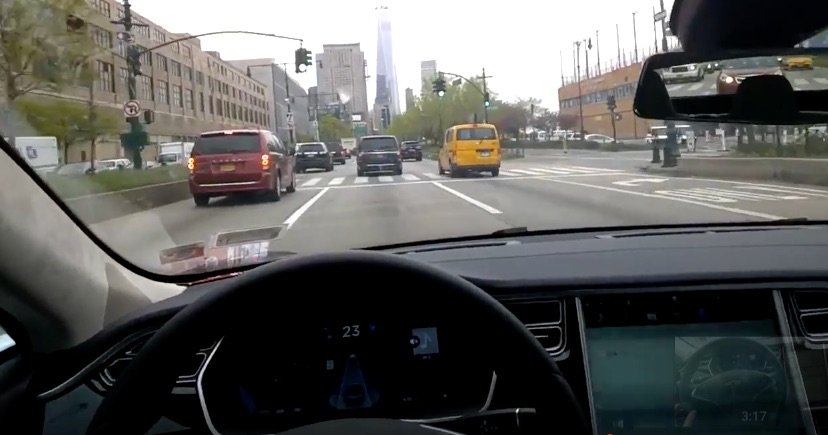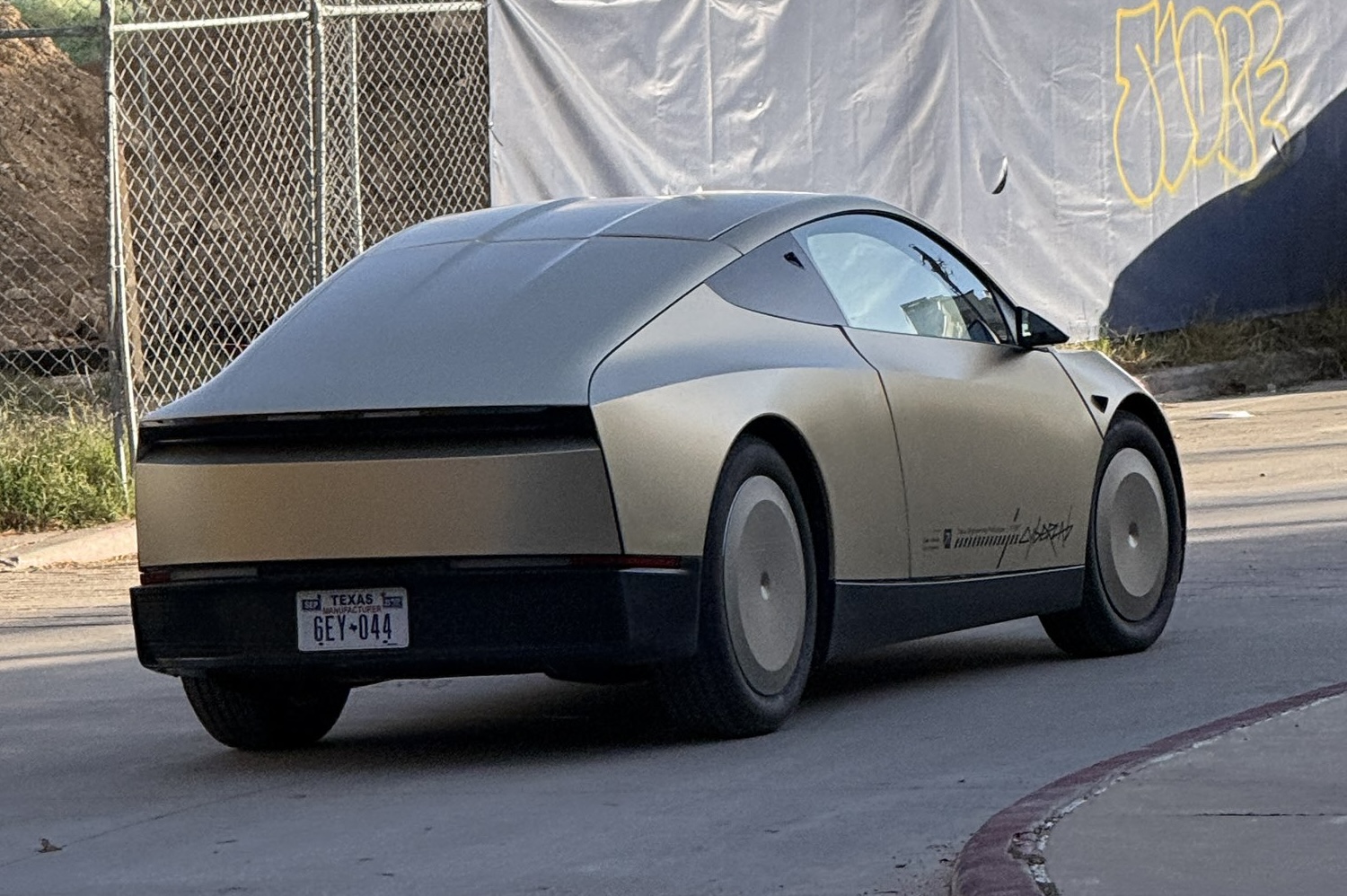News
Former New York mayor rallies cities to prepare for self-driving cars

Former New York Mayor Michael Bloomberg wants cities to be ready for autonomous vehicles. Using a data-driven approach, Bloomberg is developing a set of policy recommendations that will spell out social, environmental, and economic adjustments that cities will need to make in order to accommodate a generation of autonomous vehicles.
Austin, Los Angeles, Nashville, Buenos Aires, and Paris will be pilot cities and join in the earliest conversations. He’ll add five more cities to the list before the year is out.
“The advent of autonomous cars is one of the most exciting developments ever to happen to cities,” the three-term mayor said. “And if mayors collaborate with one another, and with partners in the private sector, they can improve people’s lives in ways we can only imagine today.”
Despite Tesla’s recent announcement that all its vehicles produced after October 10, 2016 will have the hardware needed for Full Self-driving, most cities have not begun to anticipate the effects of autonomous driving on their infrastructures. Bloomberg’s initiative may help cities and urban planners in particular to better understand how to maintain roads, train workers, design institutions, and plan land usage to accommodate what seems likely to be quickly expanding autonomous vehicle use in cities. Much speculation exists about the impact that autonomous vehicles may have on urban areas.
Carlo Ratti, Director of MIT Senseable City Lab said, “Vast areas of urban land currently occupied by parking lots and roads could be reinvented for a whole new spectrum of social functions.” Audi Urban Futures Initiative’s Lisa Futing adds, “The biggest change to the urban fabric will be to parking infrastructure. Parking will be moved indoors and outside of city centers, freeing up outdoor lots and spaces for development and public space.”
Anthony Townsend, author of Smart Cities: Big Data, Civic Hackers, and the Quest for a New Utopia, thinks attention should be devoted to all autonomous vehicles, not just cars. “It’s actually trash trucks, trailers, delivery vans, taxis, and other vehicles that take up much of the space in cities. They will be completely transformed by automated technologies.” Townsend argues that those changes plus autonomous mass transit will make cities more efficient and livable.
Colin Nagy outlined in The Guardian how transportation as an efficient and harmonious utility could become seamless due to an interface between autonomous vehicles and public transport. He offered a vision in which “we’ll see safer places where no one dies from unnecessary accidents, and we’ll see the things we love about cities get better because public spaces will be opened up.”
Bloomberg’s philanthropic arm and the Aspen Institute want to start the discourse around cities’ anticipation of autonomous vehicles by getting mayors, academics, and other experts talking and planning. This most recent endeavor by Bloomberg extends his early career vision of information technology translated into innovation, which he implemented while in public office. With a passion for public health and efforts to reduce poverty, Bloomberg’s often ground-breaking programs have been duplicated across the country. While in office he created innovative plans to fight climate change and promote sustainable development, and New York’s carbon footprint was cut by 19% as a result. As chair of the C40 Climate Leadership Group from 2010 – 2013, he drew international attention to cities’ leading role in the fight against climate change. Now he’s turning to autonomous vehicles, recognizing that cities have a mandate to provide safe and sustainable environments for their citizens while also adapting to changing technologies.

News
Tesla Cybercab tests are going on overdrive with production-ready units
Tesla is ramping its real-world tests of the Cybercab, with multiple sightings of the vehicle being reported across social media this week.

Tesla is ramping its real-world tests of the Cybercab, with multiple sightings of the autonomous two-seater being reported across social media this week. Based on videos of the vehicle that have been shared online, it appears that Cybercab tests are underway across multiple states.
Recent Cybercab sightings
Reports of Cybercab tests have ramped this week, with a vehicle that looked like a production-ready prototype being spotted at Apple’s Visitor Center in California. The vehicle in this sighting was interesting as it was equipped with a steering wheel. The vehicle also featured some changes to the design of its brake lights.
The Cybercab was also filmed testing at the Fremont factory’s test track, which also seemed to involve a vehicle that looked production-ready. This also seemed to be the case for a Cybercab that was spotted in Austin, Texas, which happened to be undergoing real-world tests. Overall, these sightings suggest that Cybercab testing is fully underway, and the vehicle is really moving towards production.
Production design all but finalized?
Recently, a near-production-ready Cybercab was showcased at Tesla’s Santana Row showroom in San Jose. The vehicle was equipped with frameless windows, dual windshield wipers, powered butterfly door struts, an extended front splitter, an updated lightbar, new wheel covers, and a license plate bracket. Interior updates include redesigned dash/door panels, refined seats with center cupholders, updated carpet, and what appeared to be improved legroom.
There seems to be a pretty good chance that the Cybercab’s design has been all but finalized, at least considering Elon Musk’s comments at the 2025 Annual Shareholder Meeting. During the event, Musk confirmed that the vehicle will enter production around April 2026, and its production targets will be quite ambitious.
News
Tesla gets a win in Sweden as union withdraws potentially “illegal” blockade
As per recent reports, the Vision union’s planned anti-Tesla action might have been illegal.

Swedish union Vision has withdrawn its sympathy blockade against Tesla’s planned service center and showroom in Kalmar. As per recent reports, the Vision union’s planned anti-Tesla action might have been illegal.
Vision’s decision to pull the blockade
Vision announced the blockade in early December, stating that it was targeting the administrative handling of Tesla’s facility permits in Kalmar municipality. The sympathy measure was expected to start Monday, but was formally withdrawn via documents sent to the Mediation Institute and Kalmar Municipality last week.
As noted in a Daggers Arbete report, plans for the strike were ultimately pulled after employer group SKR highlighted potential illegality under the Public Employment Act. Vision stressed its continued backing for the Swedish labor model, though Deputy negotiation manager Oskar Pettersson explained that the Vision union and IF Metall made the decision to cancel the planned strike together.
“We will not continue to challenge the regulations,” Petterson said. “The objection was of a technical nature. We made the assessment together with IF Metall that we were not in a position to challenge the legal assessment of whether we could take this particular action against Tesla. Therefore, we chose to revoke the notice itself.”
The SKR’s warning
Petterson also stated that SKR’s technical objection to the Vision union’s planned anti-Tesla strike framed the protest as an unauthorized act. “It was a legal assessment of the situation. Both for us and for IF Metall, it is important to be clear that we stand for the Swedish model. But we should not continue to challenge the regulations and risk getting judgments that lead nowhere in the application of the regulations,” he said.
Vision ultimately canceled its planned blockade against Tesla on December 9. With Vision’s withdrawal, few obstacles remain for Tesla’s long-planned Kalmar site. A foreign electrical firm completed work this fall, and Tesla’s Careers page currently lists a full-time service manager position based there, signaling an imminent opening.
News
Tesla Semi program Director teases major improvements

Tesla Semi Program Director Dan Priestly teased the major improvements to the all-electric Class 8 truck on Thursday night, following the company’s decision to overhaul the design earlier this year.
Priestley said he drove the Semi on Thursday, and the improvements appear to be welcomed by one of the minds behind the project. “Our customers are going to love it,” he concluded.
Just drove the redesigned Semi. Our customers are going to love it. https://t.co/KZ88sf1CDL
— Dan Priestley (@danWpriestley) December 19, 2025
The small detail does not seem like much, but it is coming from someone who has been involved in the development of the truck from A to Z. Priestley has been involved in the Semi program since November 2015 and has slowly worked his way through the ranks, and currently stands as the Director of the program.
Tesla Semi undergoes major redesign as dedicated factory preps for deliveries
Tesla made some major changes to the Semi design as it announced at the 2025 Annual Shareholder Meeting that it changed the look and design to welcome improvements in efficiency.
Initially, Tesla adopted the blade-like light bar for the Semi, similar to the one that is present on the Model Y Premium and the Cybertruck.
Additionally, there are some slight aesthetic changes to help with efficiency, including a redesigned bumper with improved aero channels, a smaller wraparound windshield, and a smoother roofline for better aero performance.
All of these changes came as the company’s Semi Factory, which is located on Gigafactory Nevada’s property, was finishing up construction in preparation for initial production phases, as Tesla is planning to ramp up manufacturing next year. CEO Elon Musk has said the Semi has attracted “ridiculous demand.”
The Semi has already gathered many large companies that have signed up to buy units, including Frito-Lay and PepsiCo., which have been helping Tesla test the vehicle in a pilot program to test range, efficiency, and other important metrics that will be a major selling point.
Tesla will be the Semi’s first user, though, and the truck will help solve some of the company’s logistics needs in the coming years.








